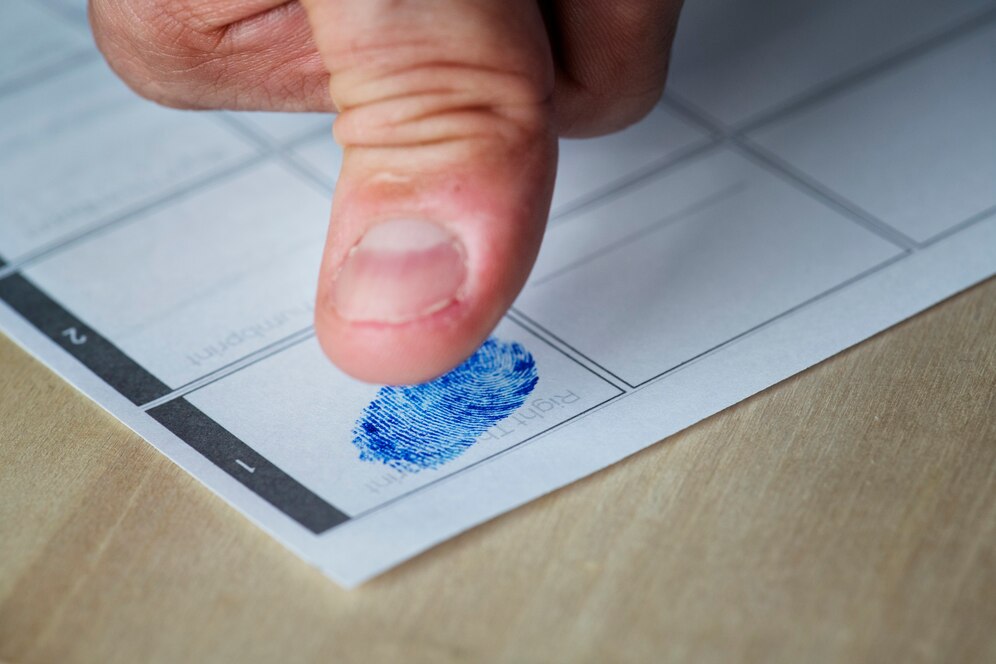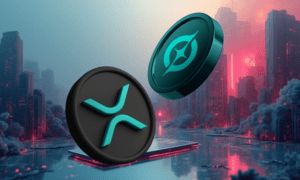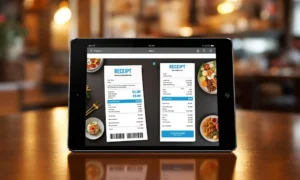Digital license plates are slowly entering the scene, and they’re doing more than just showing your car’s number. They can track your speed, alert the police, and even send updates in real time. Pair that with new tech in traffic enforcement, and we’re heading into a future where getting caught speeding might not need a cop or a camera.
So let’s talk about what digital plates really are, how real-time speed tracking works, and what all of this means for the future of driving.
What Are Digital License Plates?
Digital license plates look like regular plates, but instead of metal and paint, they use a digital screen — kind of like a Kindle or small tablet — on the back of your car. These plates show your vehicle number just like normal ones do, but they also have extra tech built inside.
They can connect to the internet, use GPS to track your car’s location, and even send real-time data to apps or systems. Some of them use Bluetooth or cellular signals to talk to other devices, like traffic systems or police tools.
Stephen Babcock, Founder & CEO of Louisiana Speeding Ticket, points out, “As digital license plates become more common, drivers need to know they can also make traffic enforcement faster and more automated. Tickets could be issued without a traditional stop, which makes it even more important to protect your driving record and fight any unfair citations.”
With a digital plate, your car can send updates automatically. For example, if your car is stolen, the plate can show a “STOLEN” message. If your registration expires, it can alert you right away. And for companies, these plates can help track delivery trucks, manage routes, and show small ads or alerts when the car is parked.
So, they’re not just plates anymore. They’re like smart devices for your car, and they’re already being tested in some places like California, Michigan, and even the UAE. They’re still new, but many experts believe they’ll be common in the next few years.
Current Use Cases and Adoption
Digital license plates are already being used in a few places, and more cities and countries are testing them every year. From personal cars to big company fleets, these plates are proving they can do much more than just show your number. Here are five examples of how they’re being used right now.
Instant Registration Updates
With traditional plates, renewing your registration means waiting for stickers, mailing paperwork, or visiting the DMV. Digital plates skip all that. Once your renewal is approved online, the update reflects directly on your plate — automatically. No stickers. No waiting.
This not only saves time but also helps avoid tickets for expired tags. Plus, some systems even send you reminders before the due date, making it harder to forget. For businesses with many vehicles, this can save hours of admin work every month and reduce errors.
Theft Recovery
If your car is stolen, every second counts. With a digital license plate, you can report the theft instantly, and the plate will start flashing a “STOLEN” message on the screen. This catches more attention on the road and alerts people nearby.
Scott Odierno, Partner of The Odierno Law Firm Accident and Injury Lawyers, mentions, “Built-in GPS can help police track the car’s exact location. Some systems even allow owners to see movement history or set up alerts if the car leaves a certain area. That makes digital plates a powerful tool for fast recovery — and peace of mind.”
Fleet Management
Delivery companies and service businesses often manage dozens or even hundreds of vehicles. Digital plates help them track each one in real time. Managers can see where every car is, how fast it’s going, and how long it’s been stopped — all from a dashboard. If there’s an issue, they can respond faster.
It also helps reduce fuel waste, improve route planning, and prevent unsafe driving. For larger businesses, this kind of insight turns into serious savings. And with fewer paperwork errors, maintenance and registration updates become much easier to handle.
Parking and Toll Payments
Nobody likes fumbling with change or waiting in long toll lines. According to Timothy Allen, Sr. Corporate Investigator at Oberheiden P.C., “Digital plates can connect to parking meters and toll booths wirelessly. When your car enters a toll road or parking zone, the system reads your plate, charges your account, and you just keep driving — no need to stop.”
For cities, this reduces traffic build-up and helps automate payments. Some systems can even show a warning on your plate if you’ve parked in the wrong spot or gone over your time, giving drivers more control and fewer surprises.
Emergency Alerts and Custom Messages
Digital plates can also be used to spread important alerts. For example, if there’s an AMBER Alert, severe weather warning, or road closure, the plate can display a short message like “MISSING CHILD” or “ROAD CLOSED AHEAD.” This helps drivers stay informed without needing to check their phone or radio.
In an interview, Kim Lewellen, Attorney of Lewellen Family Law Group, said, “Some plates can also show custom messages, like INSURED or TAX DUE, helping law enforcement and parking enforcement do their jobs faster. In the future, this could even be used for safer communication between cars and traffic systems.”
The Future of Digital License Plates
Let’s explore what the future may look like for digital plates.
Integration with AI and Smart Traffic Systems
One of the biggest shifts in the future will be how digital plates connect with smart traffic systems and artificial intelligence (AI). Roads are becoming more advanced, with smart traffic lights, sensors, and cameras already in place in many cities. Digital license plates can add a new layer of data to this network.
Kyle Winblad, Owner of Blad Boys Buy Homes, explains, “With AI, traffic systems could monitor patterns in real time — like how many cars are on the road, how fast they’re moving, or where bottlenecks are forming. This is called predictive traffic monitoring. It allows the system to adjust traffic lights, send alerts to drivers, or even suggest alternate routes before traffic becomes a problem.”
Also, these plates could send automated alerts to law enforcement. If a car is speeding, runs a red light, or enters a restricted area, the system can automatically report it—no need for an officer to be there. This saves time and improves road safety.
Then there’s dynamic tolling and congestion pricing. Cities could charge different toll prices based on traffic levels. So, during rush hour, the toll might be slightly higher to reduce traffic. Digital plates would make this automatic — no tags or scanning required. The system simply reads your plate and adjusts the charge in real time.
Instant Violation Alerts and Auto-Fines
One major change digital plates could bring is how traffic violations are handled. Right now, if someone speeds, they may get caught by a roadside camera or a police officer.
But with digital plates, this process could be much faster—and even automated.
In the future, speeding tickets may be issued without pulling drivers over. The plate could be tracked by roadside sensors or by the car’s own GPS. If it crosses the speed limit, the system logs the data and sends a fine—straight to your phone or email.
Some systems might even show the violation right on the plate. For example, it could display a warning like “Speed Violation — Fine Sent.”
These systems would also send real-time notifications to both drivers and authorities. That means drivers are instantly aware of violations, and law enforcement doesn’t need to stop each vehicle or review camera footage. It’s fast, simple, and saves resources.
Enhanced Security & Anti-Theft Features
Digital plates also open the door to better car security. Right now, if someone steals a car, it might take hours or days to find it. But future plates could make it much harder for thieves to get away.
Many plates will include built-in tamper alerts. If someone tries to remove or damage the plate, it can send an instant alert to the owner or police. This makes it easier to stop theft before the car is even moved.
Also, blockchain could be used for registration and identity verification. Jake Smith, Founder of Absolute Reg, says, “Blockchain is a secure way of storing information. So when you register your car or transfer ownership, the record is clear, tamper-proof, and easy to verify. This helps reduce fraud and fake registrations.”
Vehicle-to-Everything (V2X) Communication
Another exciting future feature is something called Vehicle-to-Everything, or V2X. This means your car (and its license plate) can “talk” to other systems around it.
For example, a digital plate could send and receive signals from traffic lights, road signs, other cars, or nearby sensors. If a traffic light is about to change, your car could know a few seconds in advance and slow down. If there’s a car braking suddenly ahead, your vehicle could get an alert to react faster—even before the driver sees it.
In this connected world, DLPs become part of a full driving ecosystem. Everything works together: cars, roads, signs, and enforcement systems. This could lead to fewer accidents, smoother traffic, and smarter navigation.
Final Thoughts
The future of digital license plates goes way beyond just showing numbers. They’re becoming smart devices — connected, helpful, and full of features that make driving safer, simpler, and more efficient.
From AI-powered traffic systems to automatic fines and theft protection, the road ahead is packed with change.
As more cities test these technologies and rules catch up, digital plates could become a normal part of every vehicle. And like smartphones, once we get used to what they can do, we might wonder how we ever lived without them.





























